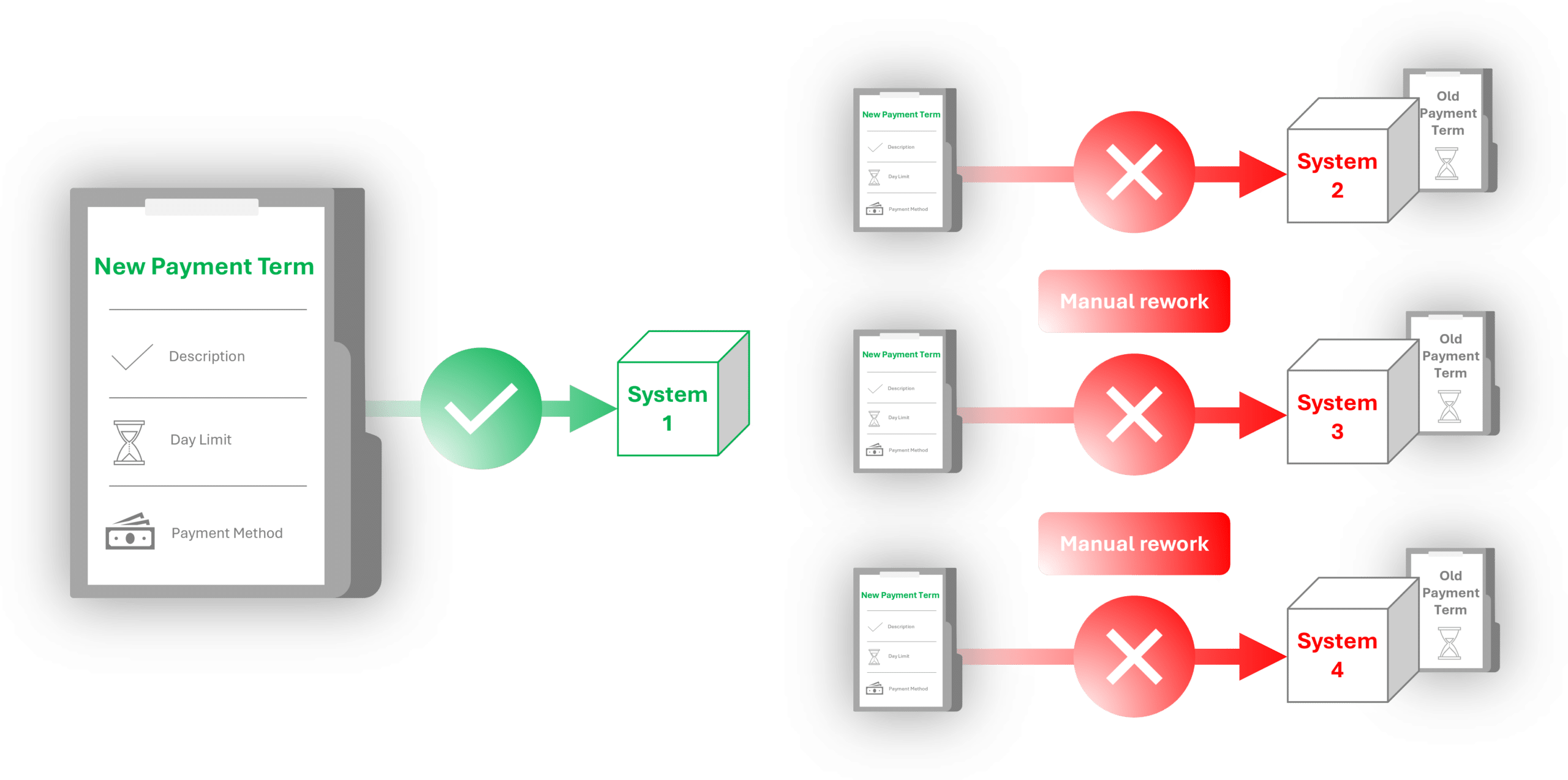
SAP PP-Predictive MRP, Something to Know!
In this article, we focus on the new proposition of SAP PP-Predictive MRP and explain the interest it.

Having already looked at the Purchaser’s challenges when it comes to (reference) data handling, we now take the IT employee perspective, and the negative impacts insufficient measures related to reference data have on their daily work.
The life of an IT employee can often be paved with complex and demanding tasks that you might not think of immediately. These professionals are the backbone of any company’s technological infrastructure, ensuring that systems run smoothly and efficiently. One of the most challenging roles within this field involves handling IT tickets and making configuration and customizing changes across various systems in the SAP landscape. While the job may seem straightforward to some, the reality is that it is riddled with challenges that require not only technical expertise but also an incredible amount of patience and diligence.
For an IT employee, the day often begins with a flood of IT tickets. These tickets can range from minor issues like password resets to major system outages that require immediate attention. Each ticket is a puzzle, requiring the employee to diagnose the problem, find a solution, and implement it as quickly as possible to minimize downtime. This constant influx of tickets can be overwhelming, leading to high levels of stress and burnout.
Moreover, the process of managing IT tickets is not always straightforward. It often involves coordinating with other departments, understanding the specific needs and workflows of different teams, and ensuring that any changes or fixes do not disrupt the overall system. This requires not only technical skills but also excellent communication and problem-solving abilities.
Beyond managing IT tickets, a sizable portion of an IT employee’s job involves making configuration and customizing changes in the SAP system landscape. This is where the real challenge lies. Each system within the company’s landscape is unique, with its own set of configurations and customizing that must be maintained separately. This means that any change made in one system must be replicated across all other systems manually.
The lack of automation in this process is a major hurdle. Manual customizing is not only time-consuming but also prone to errors. A single mistake can lead to system inconsistencies, which can have a ripple effect, causing further issues down the line. This includes human mistakes like forgetting to do introduce the customizing change in one system. The process requires meticulous attention to detail and a methodical approach to ensure that each change is implemented correctly across all systems.
The manual labor involved in maintaining system configurations and customizing is costly, both in terms of time and resources. IT employees often find themselves working long hours to ensure that everything is up-to-date and functioning correctly. This can lead to a decrease in productivity and job satisfaction, as the repetitive nature of the work can become monotonous and draining.
Additionally, the cost of errors in manual customizing cannot be underestimated. Each error must be identified, diagnosed, and corrected, which can take up valuable time and resources. In some cases, these errors can lead to significant system downtime, affecting the entire organization’s operations and productivity.
Given the challenges associated with manual customizing and configuration, the need for automation is clear. Automating the introduction of customizing changes can save time, reduce the risk of errors, and free up IT employees to focus on more strategic tasks that add value to the organization.
Despite these challenges, the benefits of automation far outweigh the costs. Automated systems like Camelot Reference Data Management can handle repetitive tasks with precision and efficiency, ensuring that configurations and customizing are implemented consistently across all systems. This improves the system landscape’s overall reliability and enhances the job satisfaction and productivity of IT employees.
The life of an IT employee handling IT tickets and making system customizing is fraught with challenges. The constant influx of tickets, the complexity of system configurations, and the lack of automation make the job demanding and stressful. However, with the right tools and strategies, these challenges can be overcome. By investing in automation and fostering a collaborative work environment, companies can alleviate the burden on their IT employees, allowing them to focus on what they do best – keeping the technological backbone of the organization strong and efficient.
Discover our solution.

In this article, we focus on the new proposition of SAP PP-Predictive MRP and explain the interest it.

This article shall help you to understand how to optimize your inventory positions in a month – or even less.

Modern PLM systems empower businesses to achieve product excellence in fast-paced markets by enhancing collaboration, agility and innovation.

Read how the Campaign Planner & Designer (CPD) helps you to manage supply chain variability.
© Camelot Management Consultants, Part of Accenture
Camelot Management Consultants is the brand name through which the member firms Camelot Management Consultants GmbH, Camelot ITLab GmbH and their local subsidiaries operate and deliver their services.